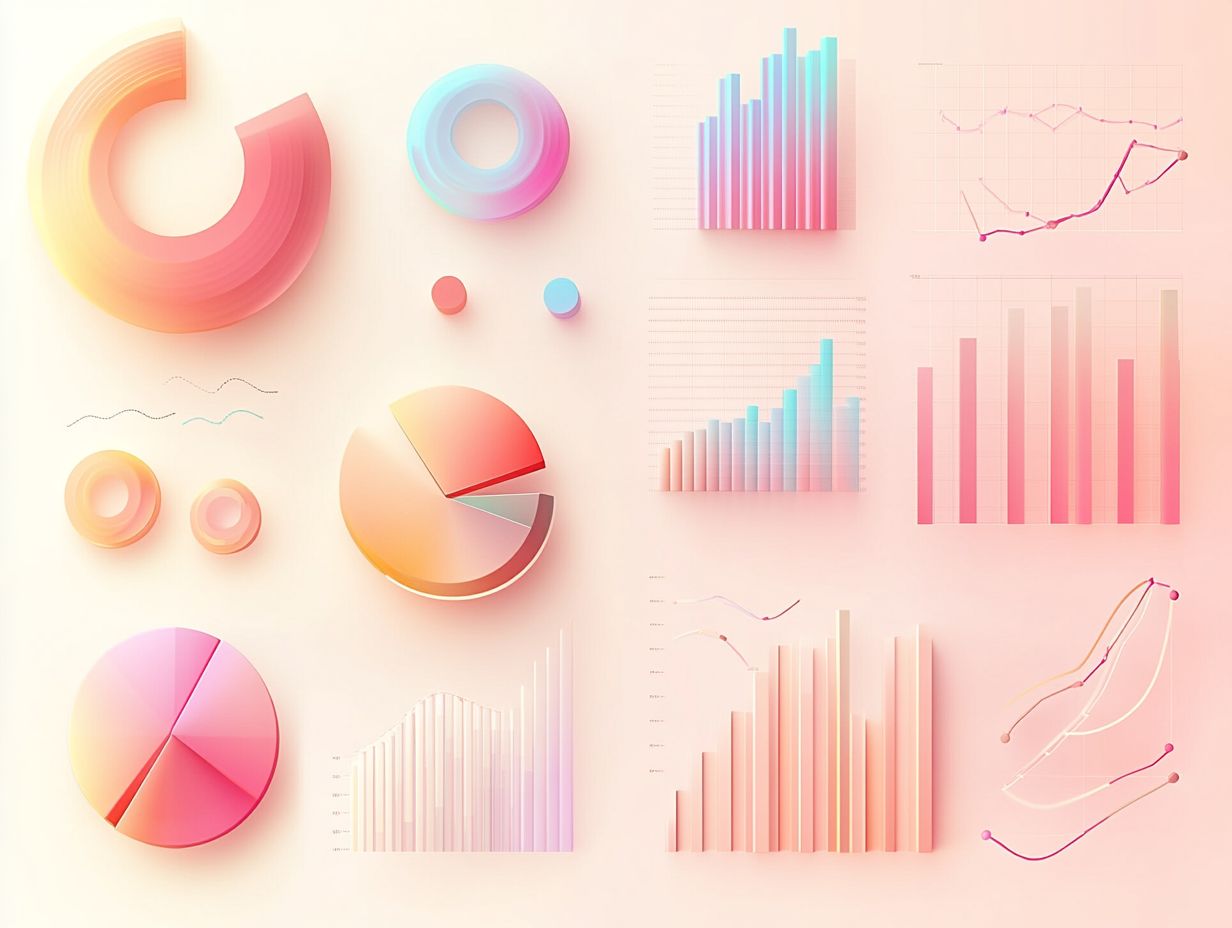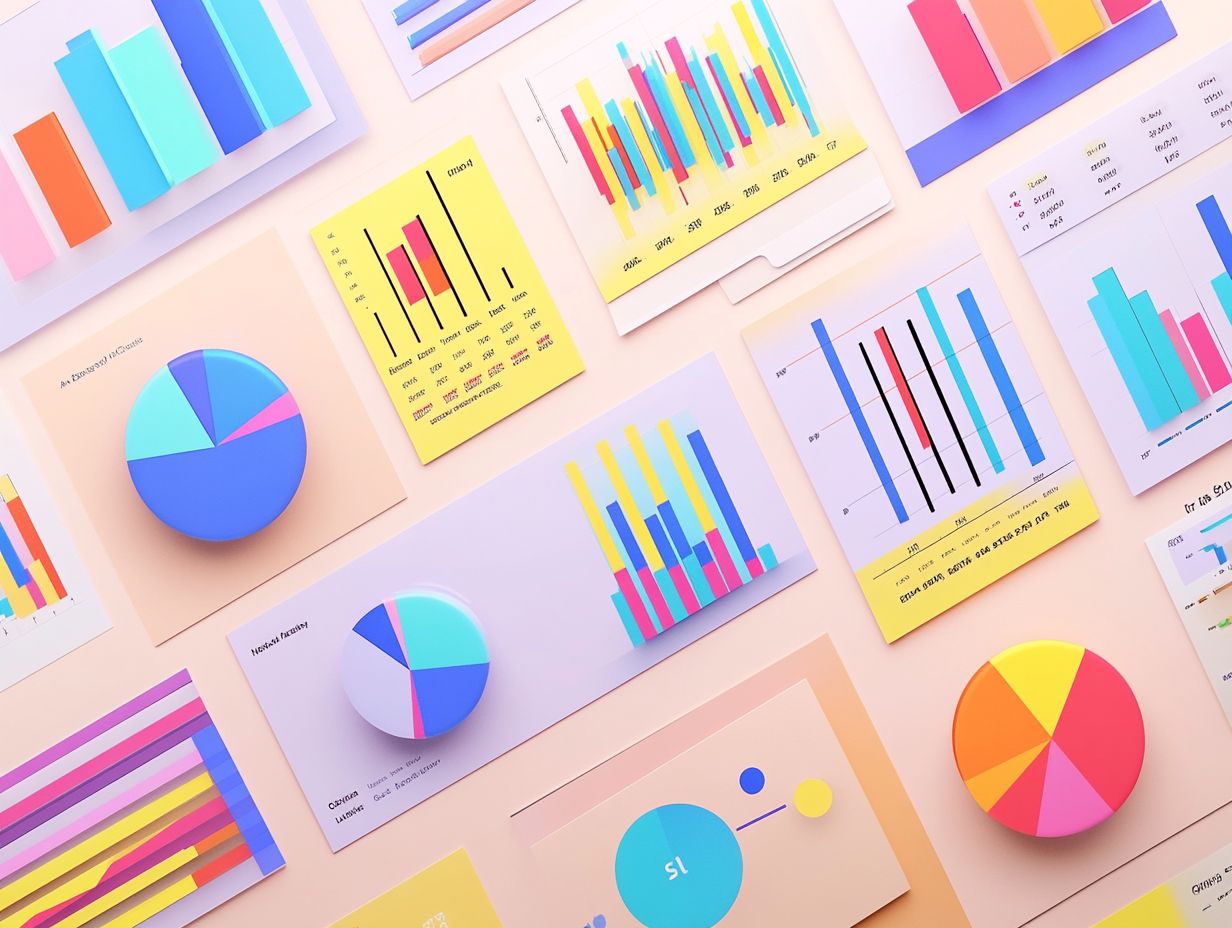What is Data Visualization? Key Techniques Explained
Data visualization elegantly transforms complex data into visual formats that are not only easier to comprehend but also more engaging to interpret.
As you explore various types of visual representations such as charts, maps, and infographics this guide will equip you with essential techniques for crafting impactful visuals. It focuses on common pitfalls to avoid, ensuring your visuals communicate effectively with your audience.
Whether you re just starting out or aiming to refine your skills, this guide is designed to elevate your data storytelling abilities, empowering you to convey your insights with clarity and influence.
Contents
- Key Takeaways:
- Understanding Data Visualization
- Types of Data Visualization
- Key Techniques for Effective Data Visualization
- Common Mistakes to Avoid in Data Visualization
- Frequently Asked Questions
- What is Data Visualization?
- What are the key techniques used in Data Visualization?
- How does Data Visualization benefit businesses?
- What are some common types of Data Visualization?
- What are the best practices for effective Data Visualization?
- How Can I Learn More About Data Visualization and Its Techniques?
Key Takeaways:

Unlock the power of data visualization to transform your insights into compelling stories! Data visualization is the graphical representation of data to clearly communicate insights and patterns. Its purpose is to simplify complex data for easier understanding and decision making. Charts, graphs, maps, and infographics are commonly used types of data visualization. They each serve a specific purpose and can effectively showcase different types of data. Choosing the right visualization tool and following design principles for clear communication are key techniques for effective data visualization. Avoiding common mistakes like overcrowding and not considering the audience is crucial for successful visualization.
Understanding Data Visualization
Data visualization is a skill that combines art and science to convert complex data sets into graphical representations that are accessible for business professionals, data scientists, and healthcare experts alike.
By employing visual tools, these representations empower stakeholders to swiftly grasp trends and recognize patterns embedded within both numerical and categorical data.
The primary aim of data visualization is to craft visual formats that enhance data accessibility. This enriches decision-making processes and delivers actionable insights that can elevate organizational practices across diverse sectors.
Definition and Purpose
The definition of data visualization involves employing visual elements to present data in a way that conveys meaning and context, allowing you to easily digest complex information.
This technique plays a crucial role in making data sets more accessible, enabling you to quickly grasp trends and understand relationships that might otherwise slip by unnoticed.
For example, a line chart can show how sales change over time, helping you see peaks and dips easily. Similarly, a scatter plot might unveil correlations between marketing spend and sales revenue, offering you critical insights to refine your strategies.
By leveraging effective visualization tools, you can enhance your decision-making processes, turning raw data into actionable intelligence and creating a more informed workforce.
Types of Data Visualization
Data visualization encompasses a variety of forms, such as charts, graphs, infographics, dashboards, and maps. Each type serves a unique purpose in presenting information clearly and effectively, ensuring that trends and patterns are not only visible but also easily understood.
Charts and Graphs
Charts and graphs are essential tools in data visualization, allowing you to effectively represent numerical data. They enable viewers to quickly identify trends and patterns.
Different types of visualizations serve specific purposes; for example, bar charts are perfect for comparing discrete categories, while line graphs excel at displaying trends over time, illustrating changes and fluctuations.
Pie charts, on the other hand, shine when it comes to showing proportions within a whole, making them ideal for representing percentage distributions.
It’s vital to prioritize design consistency and clarity when creating these visuals. Well-crafted charts not only enhance understanding but also engage your audience.
By selecting appropriate colors, layouts, and labels, you can ensure that your intended insights are communicated clearly, paving the way for more knowledge-based decision making.
Start using these visualization techniques today to enhance your data storytelling!
Maps and Geographical Data

Maps are essential for data visualization. They present geographical data that uncovers spatial patterns, trends, and demographics.
This allows you to conduct insightful analyses of location-based information. These visual representations make it easy for you and your stakeholders to grasp complex datasets without breaking a sweat.
For example, heat maps are graphical representations of data where values are depicted by colors. They vividly illustrate variations in data density, helping you quickly spot hotspots of activity or concern.
This is especially valuable in healthcare, where tracking disease outbreaks or resource allocation is critical. Similarly, choropleth maps use varying shades to indicate statistical ranges across regions.
By employing these innovative formats, you can enhance your decision-making processes and optimize performance metrics effectively.
Infographics and Dashboards
Infographics and dashboards serve as powerful tools for data visualization. They merge visual storytelling with context to distill complex information into easily digestible formats.
These tools are also important for your communication strategy. They enable you to present valuable insights in a way that resonates with a diverse audience.
By using visually appealing design elements and clear visuals, infographics simplify intricate statistics and trends, making them accessible even to those without extensive expertise. Consider a well-crafted dashboard that showcases key performance indicators through interactive graphs.
This allows stakeholders to monitor progress at a glance. The effective use of color coding and intuitive layouts boosts engagement and accelerates decision-making.
Key Techniques for Effective Data Visualization
To achieve clarity in data visualization, you must employ effective techniques while leveraging tools that align with established design principles. This approach enables you to communicate information clearly and effectively.
Choosing the Right Visualization Tool
Choosing the right visualization tool is essential for effective data analysis. Platforms like Tableau, Microsoft Power BI, and Google Trends offer features designed to meet your unique needs.
Each of these tools shines in different aspects. For example, Tableau impresses with its sophisticated visualizations and capabilities for managing complex datasets.
Meanwhile, Microsoft Power BI is a favorite for its seamless integration with other Microsoft products, making it user-friendly. Google Trends analyzes search data trends, making it valuable for marketing strategies.
These tools significantly enhance your ability to communicate data insights clearly and empower your team to make informed decisions quickly.
Design Principles for Clear Communication
Applying design principles in data visualization elevates clarity and accessibility. You can grasp insights more effectively without the confusion that often accompanies data misinterpretation.
By honing in on essential elements like color usage, layout consistency, and font choices, you can significantly enhance communication. Thoughtful color choices do more than catch the eye; they create contrast and highlight critical data points.
Keeping your layout consistent guides your audience s gaze logically, reducing cognitive load. Selecting the right fonts greatly improves readability, making content easier to digest.
When you combine these strategies, you effectively sidestep common pitfalls in data presentation. This ultimately creates a more engaging experience for your audience.
Common Mistakes to Avoid in Data Visualization

Identifying and avoiding common mistakes in data visualization is essential for ensuring clarity in your message.
By avoiding overcrowding and misleading visuals, you can enhance comprehension and keep your audience engaged instead of confused.
Overcrowding and Misleading Visuals
Overcrowding and misleading visuals can severely undermine the effectiveness of your data visualization efforts. They hinder clear communication and increase the risk of misinterpreting crucial data.
When analyzing complex datasets, clarity in your charts and graphs is vital. Anything less could obscure important trends and insights.
For example, imagine a bar chart overloaded with data points. It might leave viewers bewildered and struggling to identify the important categories.
Employing techniques like color coding or simplifying information can significantly enhance visual clarity while accurately conveying the information.
Misleading visuals cloud understanding and distort decision-making processes. This could misguide your organization based on incorrect interpretations.
Therefore, maintaining accuracy in your visual representations is key for knowledge-based decision-making.
Not Considering the Audience
Neglecting your audience’s knowledge level when creating data visualizations can lead to ineffective communication. This gap may confuse your audience and result in misinterpretation.
To engage your audience, tailor your visual presentation to their expertise whether they re seasoned professionals or newcomers. Using complex terms can confuse beginners, while oversimplifying data for experts can frustrate them.
Incorporating strategies like interactive elements such as dynamic charts or real-time data filters can enhance understanding and keep your audience actively engaged.
Real-world examples, like using infographics for educational purposes or detailed dashboards for business analysts, highlight the importance of aligning your visualizations with your audience’s familiarity.
Frequently Asked Questions
What is Data Visualization?
Data visualization is the graphical representation of data and information using visual elements like charts, graphs, and maps. This means using pictures to help understand numbers.
What are the key techniques used in Data Visualization?

The key techniques used in data visualization include data aggregation, which means combining data from different sources, data filtering, color coding, and interactive elements like hover effects.
How does Data Visualization benefit businesses?
Data visualization is powerful for businesses. It helps in making data-driven decisions, identifying areas for improvement, and communicating insights effectively.
It also enables businesses to spot patterns and trends that may not be visible in spreadsheets or text-based reports.
What are some common types of Data Visualization?
Common types of data visualization include bar charts, line graphs, pie charts, scatter plots, heat maps, and geographical maps. Each type has its own strengths and is used to represent different kinds of data.
What are the best practices for effective Data Visualization?
Best practices for effective data visualization include choosing the right type of visualization for your data, keeping the design simple, using appropriate colors and labels, and providing context for the data being presented.
How Can I Learn More About Data Visualization and Its Techniques?
There are many resources for learning about data visualization. You can find online tutorials, courses, and books to help you get started.
Explore different data visualization tools. Try creating your own visuals to understand the methods you can use better.






